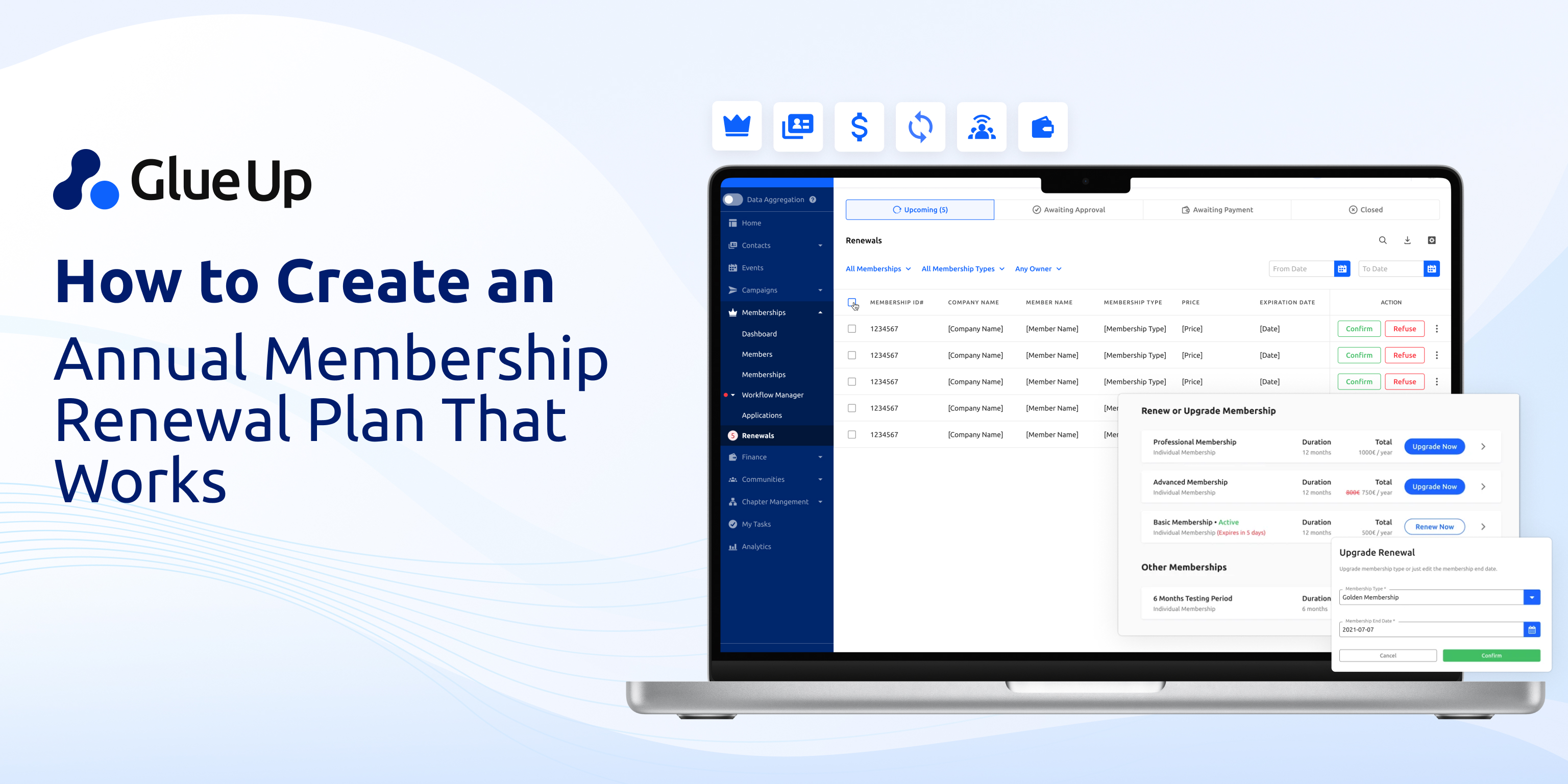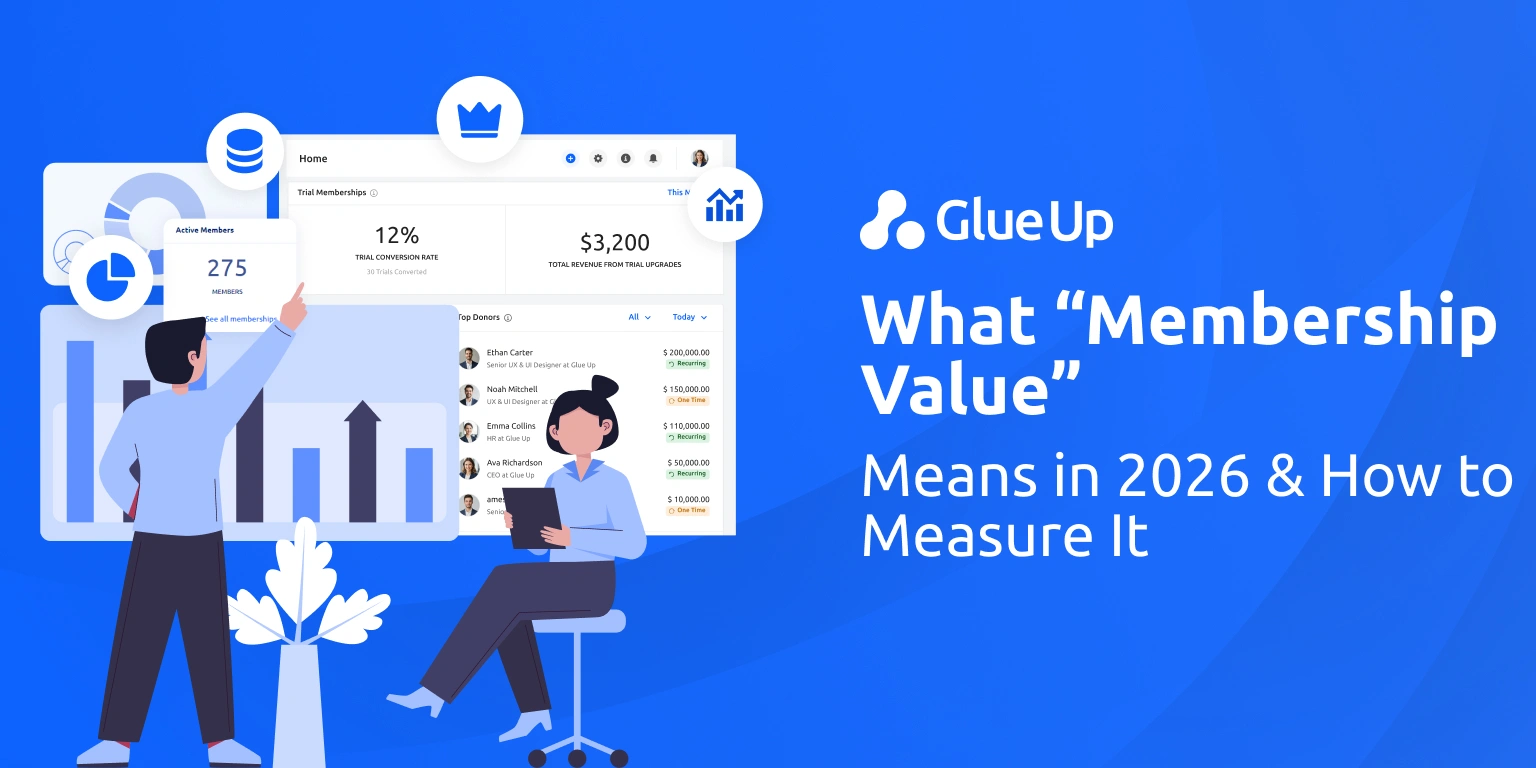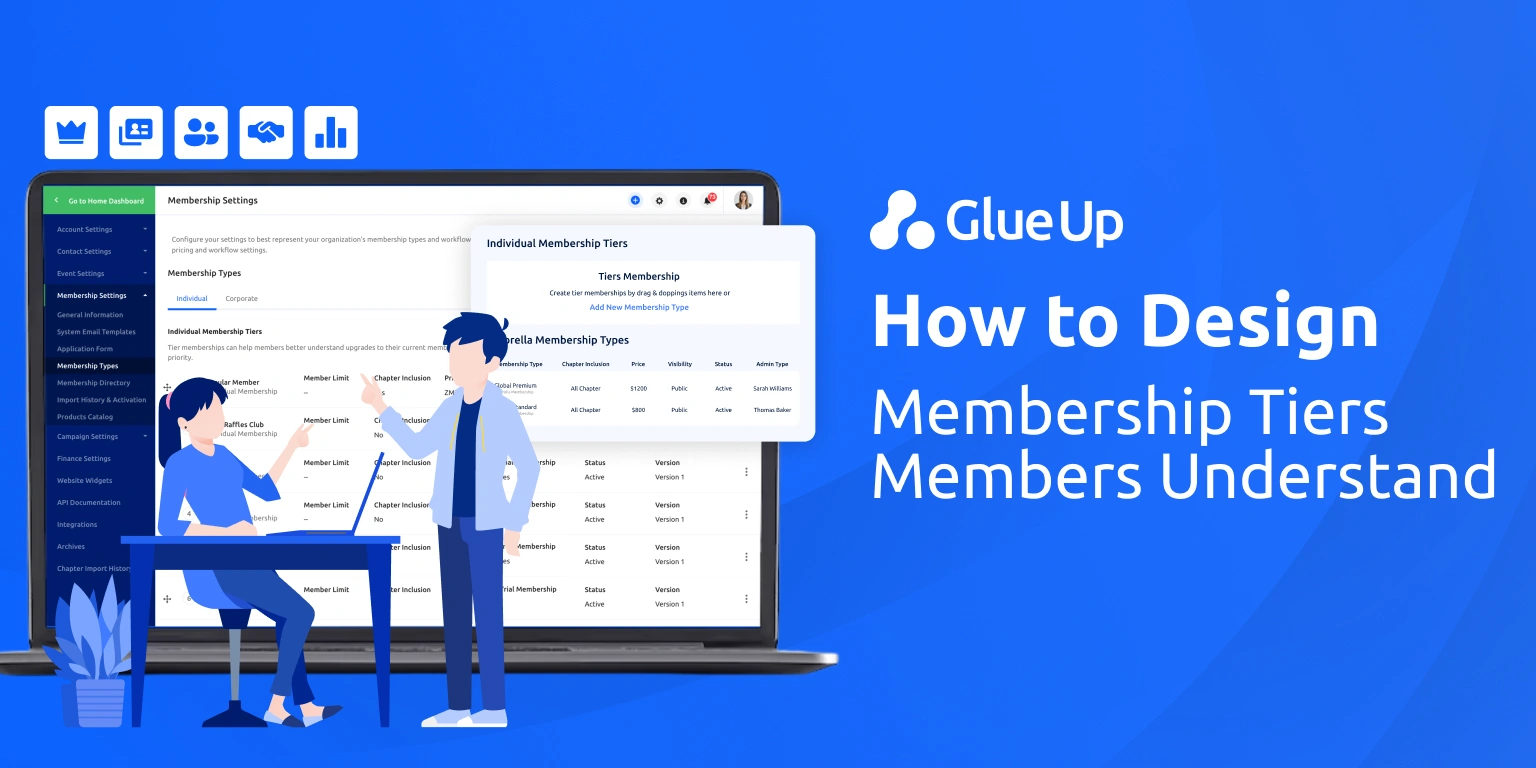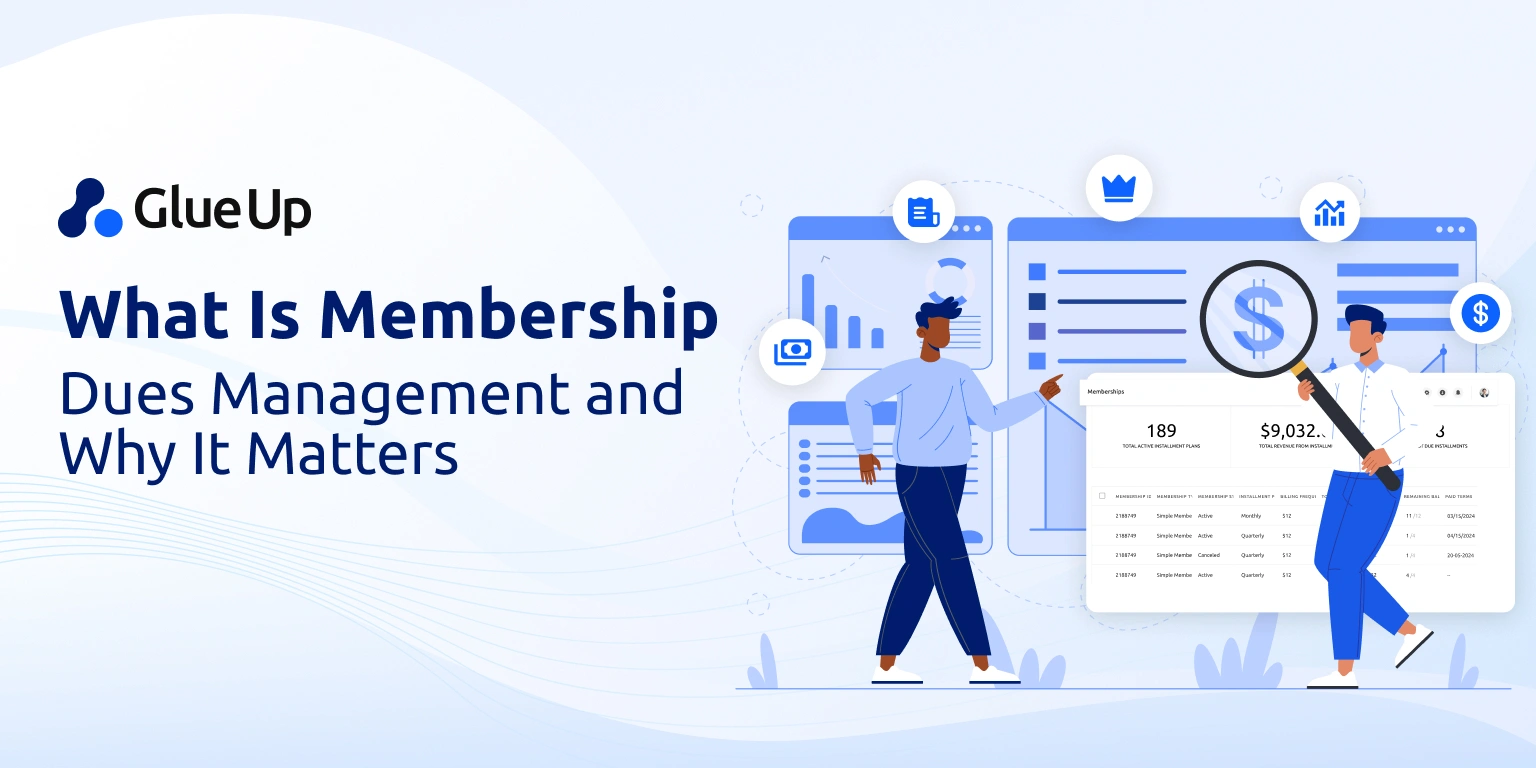
The annual membership renewal plan is where an organization proves its worth. Every association, chamber of commerce, and member-based organization knows the tension: you spend a year delivering events, benefits, and communications, then watch renewal season arrive like a tidal wave. Suddenly, the entire sustainability of your organization feels pinned to whether members will sign on for another year.
Renewals are the system you build across the full twelve months. The difference between shaky cash flow and predictable growth is whether you design an annual membership renewal plan as a year-round operating model.
Key Takeaways
An annual membership renewal plan is a 12-month system. Renewal success depends on continuous onboarding, engagement, pre-renewal readiness, and strong billing mechanics.
Members renew when they see and remember value. Quarterly value receipts, career-stage messaging, and impact storytelling make renewal feel like the obvious choice.
The dues cycle you choose shapes outcomes. Calendar cycles bring higher average renewal rates and predictability, while anniversary cycles support faster growth but create operational complexity.
Communication cadence drives inevitability. A structured sequence (60, 30, 10, 1 days pre-expiry, plus a post-expiry follow-up) across multiple channels maximizes renewal rates.
Billing and policy design prevent avoidable churn. Auto-renew, installment options, account updaters, and clear grace-period rules transform payment mechanics into a core retention strategy.
Quick Reads
What an Annual Membership Renewal Plan Really Solves
Membership renewal is protecting the credibility of your organization and ensuring its ability to deliver consistent value. When renewals are high, you signal legitimacy to potential members, sponsors, and partners.
The problem is that many associations don’t have a real plan. Surveys by association tech firms show that only about one-quarter of organizations maintain a documented, organization-wide engagement strategy that ties directly to renewal. Without one, renewal season becomes an unpredictable gamble.
Think of it this way: if membership growth is the spark, renewal is the oxygen. Without oxygen, the fire goes out. That’s why an annual membership renewal plan should be the centerpiece of every strategy conversation.
The Annual Membership Renewal Plan as a 12-Month System
A common mistake is treating renewals as a moment. In reality, renewal is the product of four interdependent loops that play out across an entire year:
Onboarding – the first 90 days of a new member’s life, where expectations are set and value must be experienced early.
Engagement – the ongoing loop of communication, events, and participation that keeps members connected.
Pre-renewal readiness – the subtle ramp-up in the months leading to renewal, where value is recapped and messaging begins.
Billing mechanics – the operational layer that makes paying frictionless and prevents accidental churn.
When organizations fail in renewal, it’s rarely about one bad email. It’s about one of these loops being weak. The annual membership renewal plan is the structure that ensures no loop gets neglected.
Build Value Proof Members Can Feel and Recall
Research from professional association studies has shown that members renew when they perceive value and view the organization as legitimate. It’s not enough to provide benefits, you must prove that members experienced those benefits in ways they can remember when making the renewal decision.
That means designing “value proof” systems:
Quarterly value receipts – simple communications that recap what a member has received (“3 events attended, $250 in discounts used, 12 hours of CE credits earned”).
Impact storytelling – stories that show the association’s influence on policy, community, or professional development.
Career-stage alignment – benefits communicated differently to early-career, mid-career, and senior members.
The annual membership renewal plan must schedule these value proofs throughout the year. If a member has to remember why they joined at the moment of renewal, you’re already too late.
Choose Your Dues Cycle with Eyes Open
Every association faces the decision: calendar-year renewal or anniversary-based renewal.
Calendar cycles (everyone renews January 1, for example) create clean reporting and typically show higher average renewal rates.
Anniversary cycles (renewal happens one year after a member joined) are more member-friendly and can support faster growth, but they increase complexity for staff.
Data from membership marketing benchmarking studies suggests that calendar-year cycles offer predictability and stronger aggregate renewal, while anniversary cycles correlate with expansion. The point is not that one is “better,” but that the annual membership renewal plan should make the choice deliberately. Too often, associations simply inherit one model without examining the operational or financial trade-offs.
Set the Communication Cadence for Your Annual Membership Renewal Plan
Communication is the most visible part of a renewal plan, but too many organizations treat it as a last-minute blast. A well-structured cadence creates inevitability.
A proven baseline sequence looks like this:
60 days before expiration – early reminder, recap of value, optional early-bird incentives.
30 days before expiration – direct ask, personalized benefits messaging.
10 days before expiration – urgent reminder, one-click payment options.
1 day before expiration – concise alert, “renew now to avoid interruption.”
10 days after expiration – friendly win-back email, “here’s what you’re missing.”
This cadence should extend across channels: email, SMS, in-app notifications, and, for high-value members, personal outreach. The annual membership renewal plan makes sure this is designed and automated.
Make Billing Mechanics Do Some of the Retention Work
Payment failures are one of the most preventable causes of churn. Members don’t always leave because they want to. They leave because their card expired, or the process was clunky.
The annual membership renewal plan must include billing strategy:
Auto-renew by default with transparent opt-out.
Installment plans (monthly or quarterly) for members who cannot afford one lump sum.
Account updater services to prevent declines from expired cards.
Smart retries and polite dunning to save failed transactions.
This is retention. Every unnecessary payment failure is a lost member.
Get Serious About Grace Periods and Status Rules
Associations vary widely in grace periods: about 40 percent use two to three months, some use none, and a small minority stretch to a year. Longer grace periods feel generous, but they can distort renewal metrics and slow cash flow.
A better approach is a graduated access model:
Members get 30–60 days of grace with limited access to benefits.
Their status is visible in the portal (“grace period: active pending renewal”).
After the period, access ends unless they renew.
The annual membership renewal plan should define this policy clearly, so staff don’t negotiate ad hoc, and members know exactly what to expect.
Measure, Learn, and Adjust
Renewal is never “set and forget.” The most effective associations use a small set of metrics to evaluate their plan each year:
Renewal rate by cohort (new vs long-term).
On-time vs grace renewals.
Win-back conversion.
Engagement indicators (event attendance, content use, community participation).
Payment success rates.
These metrics turn renewal from guesswork into a repeatable, optimized system. Platforms like Glue Up allow organizations to see these KPIs in one place and adjust strategy accordingly.
Putting It Together: The One-Page Renewal Playbook
The most effective annual membership renewal plan doesn’t live in a binder. It lives as a one-page playbook, visible to the membership team, finance, and leadership.
That playbook might look like this:
Months 1–3: Onboarding sequence, welcome events, early engagement prompts.
Months 4–9: Quarterly value receipts, storytelling campaigns, community nudges.
Months 10–12: Renewal cadence, billing checks, member segmentation for outreach.
Year-end: Metrics review, adjustments for the next cycle.
With Glue Up, much of this can be automated: workflows for onboarding, analytics dashboards, communication templates, installment billing, and renewal reminders. The role of the membership team shifts from chasing down invoices to designing experiences that members actually want to renew.
Renewal as Legitimacy
In the end, the annual membership renewal plan is a legitimacy process. Every renewal is a vote of confidence that your organization deserves another year of someone’s trust, money, and attention.
Organizations that treat renewal as a mechanical step will continue to struggle with unpredictability. Those that design renewal as a year-round operating system will enjoy stronger reputations and more stable growth.
The choice is simple: roulette or inevitability.
Ready to turn renewals into inevitability? Book a demo today and see how Glue Up helps your annual membership renewal plan actually work, year after year.



